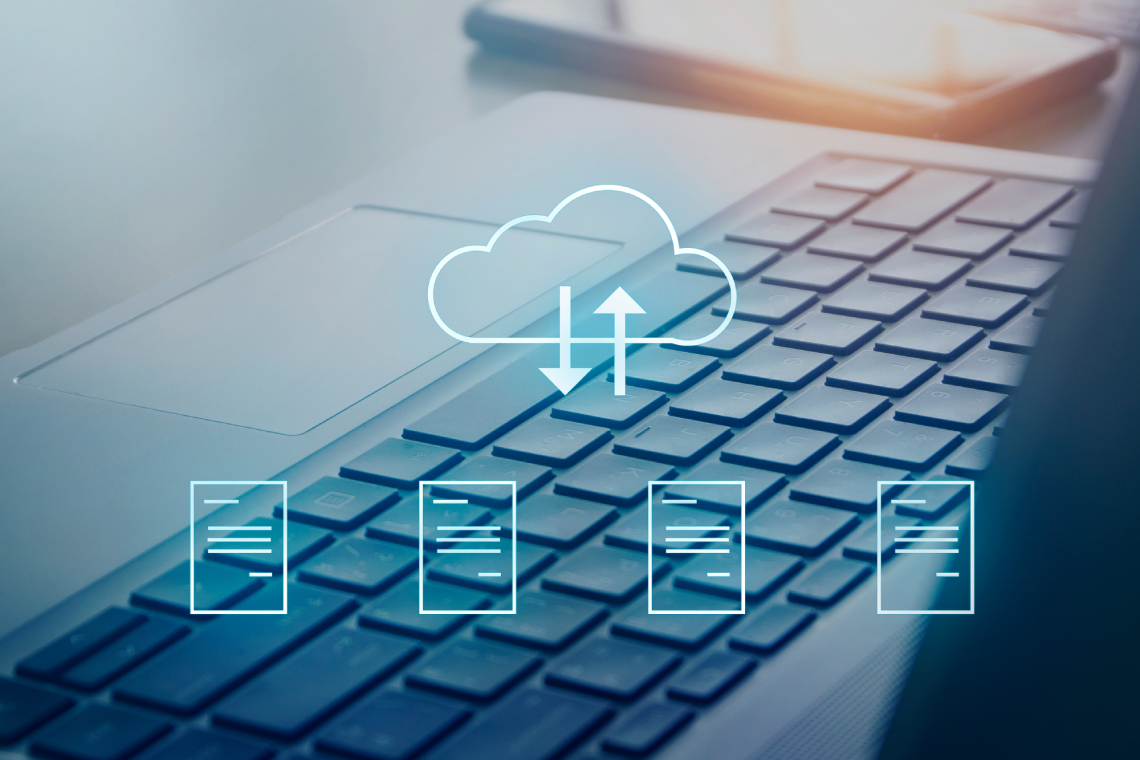It’s estimated that almost 50% of working professionals will continue working remotely post COVID-19. The new normal with remote and hybrid work environments has altered how companies use technology to facilitate day-to-day operations.
Remote workers regularly access cloud-based systems and internal servers across multiple platforms and devices to communicate and collaborate with their coworkers, regardless of their physical location. In addition, 70% of organizations report allowing their remote workers to access corporate assets from personal devices.
As a result of this shift from in-person work environments to remote workplaces, organizations are now more vulnerable than ever to heightened cybersecurity risks. It is estimated that cybercrimes will cost companies worldwide nearly $10.5 trillion annually by 2025.
Some of these cybersecurity risks include data breaches or data loss due to phishing, ransomware, and other attacks that can prove catastrophic to a company’s bottom line and public reputation. According to IBM, the average cost of an organizational data breach is $4.35 million.
By simply practicing proper file security, businesses can thwart these cyberthreats and avoid the legal and financial consequences that are associated with improper cybersecurity practices.
In this article, we will explore what file security is, why it’s essential for organizations, and best practices. We will also detail how poor file security exposes businesses to cyberattacks, as well as how to use tools like WinZip® Enterprise to enhance your organization’s file security practices.
What is File Security?
You can think of file security this way: Database, network, and endpoint security is like a bank vault. File security is like having a secure lockbox stored within the vault. Even if someone breaks through the vault door, they can’t get to what’s inside the lockbox. Most organizations have data protection plans in place that are solely focused on overall database, network, or endpoint security. Although these are important factors to consider, vulnerabilities can still be exploited if someone is able to access the network or a connected device.
If unauthorized persons gain access to a business’s storage infrastructure, all the information stored within is at their fingertips. Without file-level security provisions, they can then open files and folders and retrieve sensitive company information.
The goal of these file security provisions is to protect each individual file within a company’s inventory, instead of granting authorized users access to an entire database at once. This practice makes it much more difficult for malicious third parties and other unauthorized individuals to gain access to critical business-related information.
Why Proper File Security is Essential for Organizations
From physical theft to unauthorized access, phishing attacks, and more, there are many ways in which security is compromised and data loss occurs. When data is not sufficiently protected, it can result in revenue loss, ransomware attacks, reputational damage, and other legal and financial consequences.
While every business professional needs file security, it is especially vital in heavily regulated industries that handle sensitive data. For example, healthcare companies and financial organizations hold high-value data that makes them a key target for malicious actors. This sensitive information includes items such as:
- Cardholder data
- Protected health information (PHI)
- Personally identifiable information (PII)
- Social security numbers
- Financial records
Modern privacy regulations are growing, and Gartner predicts that by 2023, 63% of the world will have their personal information protected by some sort of privacy law. Proper file security is key to compliance with applicable compliance provisions.
Examples of regulations that impact companies that handle sensitive data include:
Health Insurance Portability and Accountability Act (HIPAA). HIPAA is concerned with privacy and security of protected health information (PHI). Healthcare entities and their business associates must use best practices such as encryption to ensure the safe use and access of sensitive data.
Gramm-Leach-Bliley Act (GLBA). The GLBA requires financial institutions (including those who provide financial products or services) to encrypt data at rest and in transit on external networks. File security provisions safeguard nonpublic personal information (NPI), which is financial data that could be used to identify an individual.
Federal Financial Institutions Council (FFIEC). The FFIEC guidelines require data at rest to be encrypted when the company’s risk assessment indicates that such protective services are necessary.
Payment Card Industry Data Security Standard (PCI DSS). The PCI DSS security standard identifies 12 compliance requirements, including data encryption, for organizations that handle cardholder data.
Federal Information Processing Standards (FIPS). FIPS applies to all non-military government agencies and contractors, including anyone who handles sensitive but unclassified (SBU) information. FIPS 140-2, for example, identifies the security requirements for cryptographic modules to ensure that sensitive data is properly protected.
Federal Information Security Modernization Act (FISMA). FISMA requires federal agencies (as well as government contractors) to implement information security practices that reduce the risk of unauthorized data access. This includes the creation of a comprehensive system security plan with best practices such as data encryption.
File Security Best Practices to Follow
Prioritizing file security is the best way to ensure that your company’s important business information remains safe in the event of a data breach. Follow these best practices to keep your organization’s sensitive information secure and the integrity of your company intact:
Enforce File-Level Encryption Across Your Organization
File-level encryption secures your data across its lifecycle, including when it is in transit or at rest. This is a more targeted type of security than full-disk encryption, which prevents unauthorized access at the device level.
Data is considered “at rest” when it is not actively moving between devices and networks, such as when it is stored in a device or database. The data state is easily accessible without the proper security protections in place, making data at rest a popular target for malicious cybercriminals.
For instance, if files and folders that exist on employee devices are not properly encrypted, then the data they contain can be easily accessed by unauthorized users if the device falls into the wrong hands.
Data in-transit is also susceptible to cyberattacks if not properly encrypted. Malicious actors will often intercept data during cloud-based or internet file transfers. For example, cybercriminals can access company networks through unsecure Wi-Fi routers, stealing sensitive data in a matter of moments.
Leveraging file encryption helps companies reduce the risk of insider and third-party threats by ensuring that only authorized users can access organizational files and folders that hold sensitive data. This is because encrypted files can only be decrypted with the right password or key, rendering them unreadable to unauthorized individuals.
Manage User Access and Permissions
It is reported that 61% of all data breaches involve credentials that are either stolen via social engineering schemes or hacked by cybercriminals. By managing user access privileges and leveraging permissions-based user roles, companies can control who has access to what data, significantly increasing file security.
Organizations with robust data security plans utilize the principle of least privilege (POLP) to minimize the areas in which data exfiltration can occur. The POLP limits user access rights to only what is necessary to carry out assigned workplace tasks. With custom controls in place, system administrators can also immediately revoke user access to designated files directly after task completion.
Often, unintentional employee errors and intentional insider attacks occur when POLP is not properly managed. Because of this, businesses should regularly audit their access controls to determine if POLP still applies. Use audit logs to properly identify company file accessing and sharing history to detect potential breaches in file security.
Require Multi-Factor Authentication for User Accounts
In addition to managing user access privileges and leveraging permissions-based user roles, companies should also require their employees to use multi-factor authentication (MFA).
Multi-factor authentication is a layered approach used to secure sensitive data. It requires a combination of at least two credentials to verify a user’s identity.
Multifactor authentication credentials may include:
A knowledge factor such as a password, personal identification number (PIN), or passphrase.
An inherent factor such as a fingerprint or facial features detected by facial recognition software.
A possession factor such as a security token or smartcard.
Enabling MFA ensures that even if a cyberhacker were to uncover your account password, they would not be able to break into your account without a second method of authentication. Remember, it only takes one compromised account to result in a data breach for an entire organization.
How Poor File Security Exposes Businesses to Cyberattacks
With the influx of businesses shifting to remote and hybrid working environments comes a stampede of cyber attackers ready to infiltrate company computer systems with one common goal: to steal or tamper with sensitive information.
Poor organizational file security practices only further this agenda, leaving important company files exposed to a wide variety of cyberthreats. As of June 2022, 34.9 million records have been compromised by data breaches. Here are two examples:
In April 2022, the Yuma Regional Medical Center (YRMC) disclosed that it fell victim to a ransomware attack that exposed the PHI of 737,448 individuals. Although the medical facility’s daily services were mostly unaffected, a subsequent investigation found that the attacker gained access to some of YRMC’s external systems and removed files containing sensitive information. The stolen data affects current and former patients and includes names, medical information, social security numbers, and health insurance information.
In the same month as the Yuma Regional Medical Center data breach, General Motors confirmed that it also fell victim to a large-scale credential stuffing attack. Threat actors used previously compromised login credentials (often sourced from people using the same credentials across multiple accounts) to try and infiltrate GM’s online customer portal. While GM wasn’t technically at fault for the data breach, a lack of two-factor or multi-factor authentication on their website made it easier for hackers to implement the credential stuffing attack.
The number of credential stuffing incidents that occur is on the rise, which is not surprising considering that 67% of all Americans use the same password for different online accounts.
Weak password protocols threaten file security, and businesses that employ security practices like multi-factor authentication are better protected against credential stuffing attacks. Although this practice is encouraged by security experts, only 11% of organizations require their employees to use multi-factor authentication to authenticate their login attempts.
How WinZip Enterprise Enhances File Security for Businesses
To mitigate the risk of data breaches, many organizations utilize business-level file encryption and compression services such as WinZip Enterprise. This solution features extensive file security capabilities including Advanced Encryption Standard (AES) encryption that ensures data protection, no matter if the data is in-use, in-transit, or at-rest.
WinZip Enterprise’s military-grade encryption services also help businesses comply with federal data protection regulations including the Defense Federal Acquisition Regulation Supplement (DFARS) and the Federal Information Protection Standards (FIPS).
WinZip Enterprise also enables users to compress their business files and encrypt them at the same time, reducing file transmission time and maximizing storage space. With WinZip Enterprise, users can even add password protection to their encrypted ZIP files, adding an extra safeguard to an organization’s file security plan.
Explore how WinZip Enterprise can help your organization set up and improve file security.





